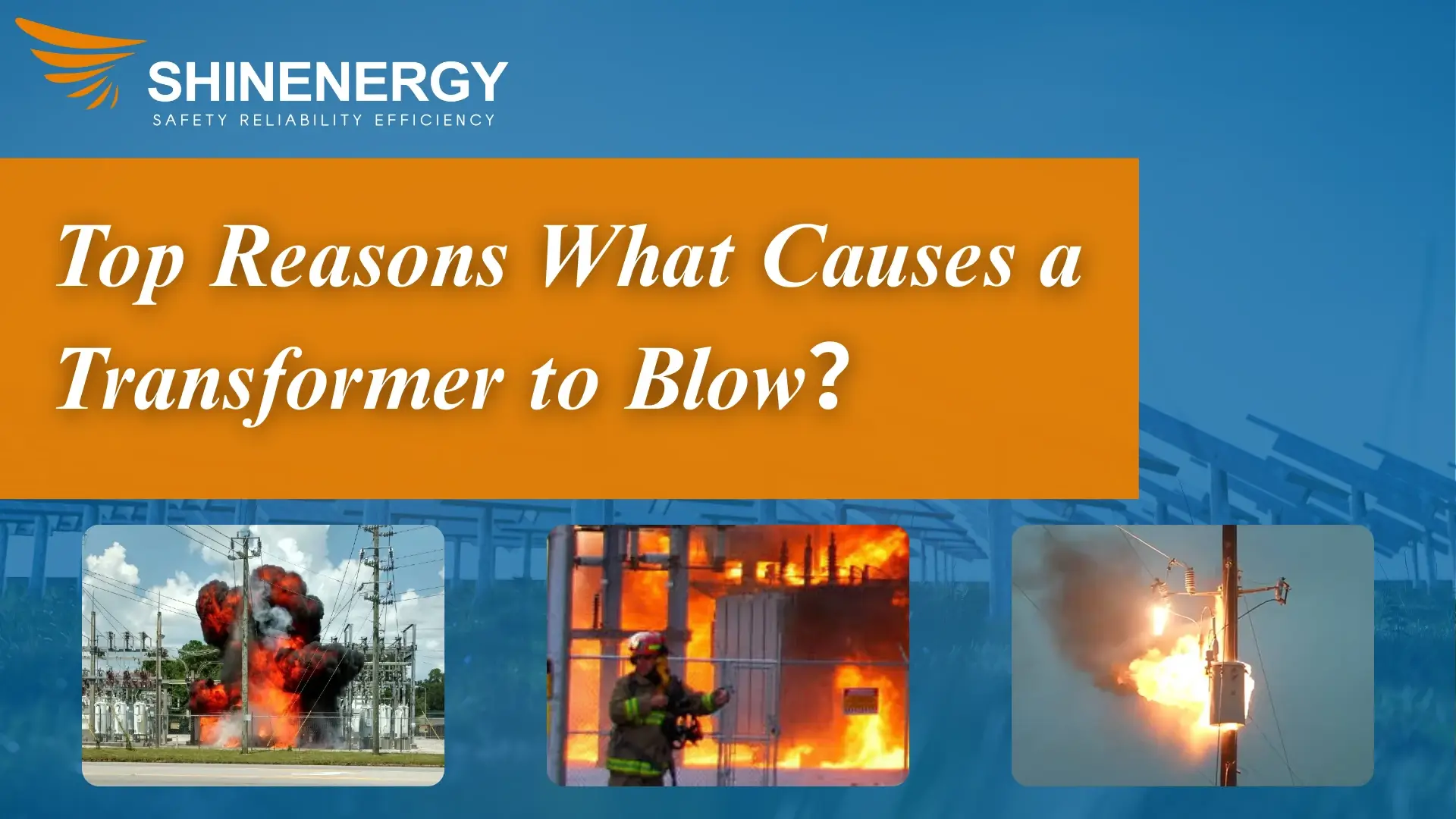What Causes a Transformer to Blow?
A transformer doesn’t “just blow.” It fails because something pushes it past its design limits. Want to know what causes a transformer to blow? Start by tracing current, temperature, and insulation.
Small cracks grow into insulation breakdown. A voltage spike finds a weak path. Current arcs through air or insulation. Then comes the noise, the flash, and the shutdown.
Mechanical vs Electrical Failures
Blowouts come in two broad types:
Electrical causes: overvoltage, inrush, insulation failure, flashover
Mechanical causes: loose windings, tank rupture, oil sloshing, connector fatigue
Both are deadly. But electrical problems often trigger mechanical damage secondarily.
Top 6 Root Causes of Transformer Blowouts
Curious about what causes a transformer to blow, or what causes transformers to blow up in real-world settings? Here are six proven failure sources. These same reasons also explain what would cause a transformer to blow in an industrial environment or what causes an electrical transformer to blow after surge events.
- Overvoltage StressGrid switching, back-feed from solar inverters, or lightning can push internal voltage past dielectric strength.
- Harmonics and Load ImbalanceHigh THD (total harmonic distortion) generates excess heat. Unbalanced phases strain the core.
- Inrush Current During Energization, Transformers draw up to 12x rated current when first energized. If not mitigated, it causes thermal shock.
- Thermal Overload: If the cooling system fails, copper expands unevenly. Insulation melts. Oil carbonizes. Then it arcs.
- Insulation Aging or Moisture Ingress. Humidity breaks down insulation faster than time. Especially in air-cooled or poorly sealed units.
- Poor Installation Practices: Loose terminals, under-tightened bushings, or bad earthing create flashover points.
Why Do Transformers Blow Up Under Load?
High loads don’t kill transformers directly. The issue is:
- Steady overload = insulation fatigue
- Sudden peak load = mechanical rupture
- Uncooled core = localized hotspot > 180°C
Even dry-type transformers will arc internally if the core expands unevenly. You get blowouts without warning.
How Do Transformers Blow Internally?
If you’re wondering how do transformers blow, or what can cause a transformer to blow, here’s what happens inside:
- Insulation fails
- Arc flashes between two conductors
- Arc turns into plasma
- Internal gas builds pressure
- Pressure ruptures casing
- Oil ignites or resin cracks
- Flash, noise, smoke
That’s the full blowout chain.
Why Do Transformers Blow During Startup or Energization?
Energizing a transformer cold causes inrush current. If circuit protection isn’t precise:
- Core saturates
- Voltage spikes
- Windings shake
- Arc forms instantly
Startup is the most vulnerable moment. Without pre-charge logic or soft start, the unit may blow on day one.
What Makes a Transformer Blow in Outdoor Conditions?
Ask what makes a transformer blow in outdoor substations or solar farms? The answer often includes:
- High humidity
- Dust accumulation
- UV damage on insulation
- Rodent intrusion
- Poor ventilation
Shinenergy uses IP44+ enclosures, rodent-proof grills, UV-stable epoxy, and tropicalization coating for all outdoor-rated transformers.
Shinenergy’s Proven Design Against Noise and Failure
Noise isn’t just an annoyance. It’s a health indicator.
Transformer humming signals magnetic flux. Buzzing often comes from loosened laminations. Crackling means partial discharge.
Shinenergy builds noise control into the design:
- Silicon steel core with low-loss, low-noise grain orientation
- 3D clamping structure to suppress acoustic vibration
- Anti-hum varnish dipping on all windings
- Acoustic testing booths for QC pre-shipment
- Fin-type cooling to prevent thermal expansion and noise spikes
If a transformer hums differently than designed, we catch it before it ships.
Common Questions About Transformer Blowouts
What causes a transformer fuse to blow?
Short circuits on the secondary side, motor starts with no soft start, or ground faults. In-rush current can also exceed fuse rating.
What causes electrical transformers to blow in dry environments?
Overheating from poor ventilation, harmonic distortion, or internal arcing.
What causes an AC transformer to blow in HVAC systems?
Shorted control wires, relay coil faults, and faulty thermostats.
What would cause a transformer to blow randomly?
Spikes, poor grounding, or overvoltage. Always log load and timing.
Summary: Predict, Prevent, and Protect
Now you know:
What causes transformers to blow up?
Stress that exceeds design limits.
What causes power transformers to blow?
Thermal fatigue, electrical stress, or poor installation.
What causes a transformer to blow up?
Arc buildup, insulation failure, and mechanical rupture.
That’s why Shinenergy focuses not just on kVA, but also on harmonics, cooling, surge resistance, and system fit.


